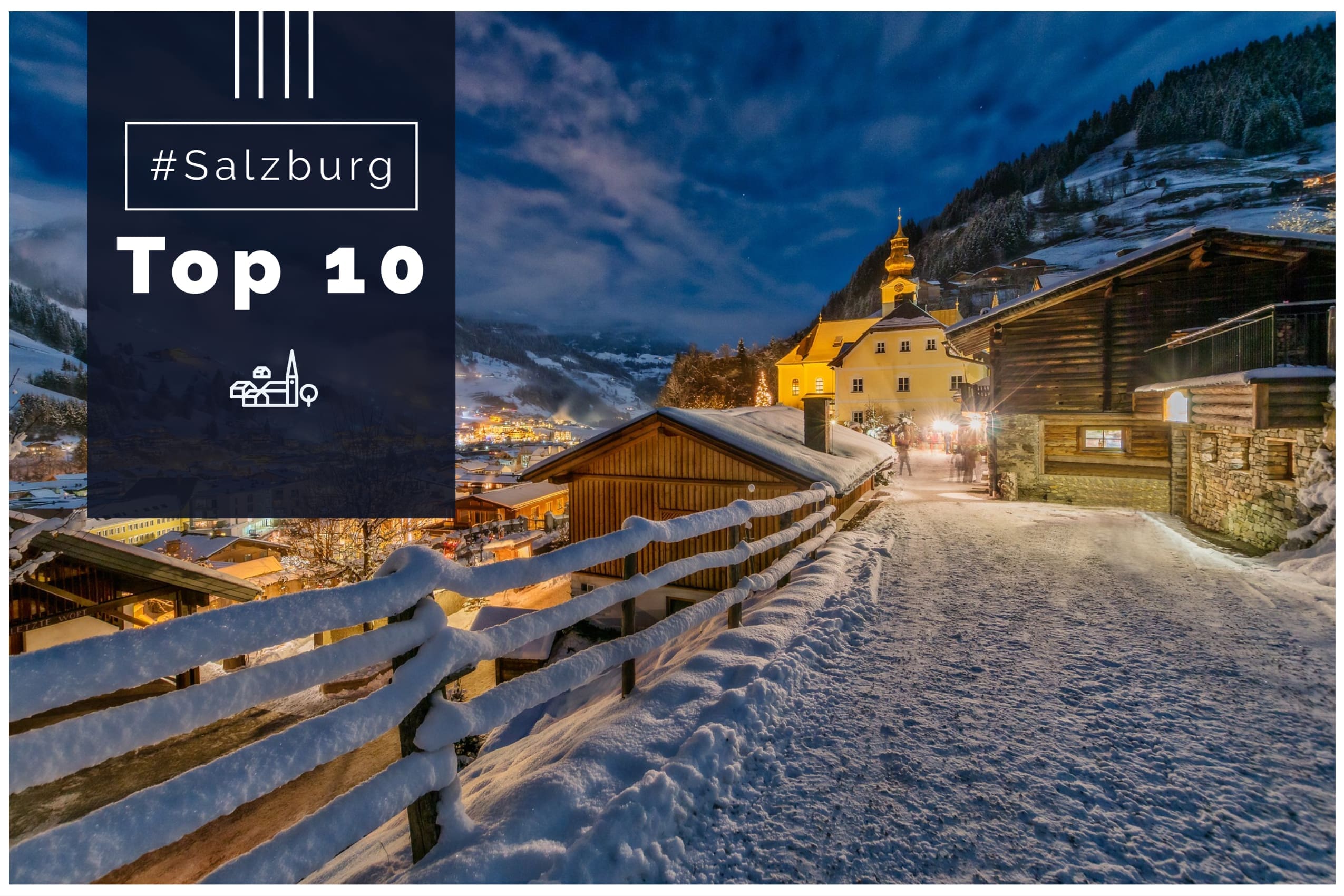📌 Read in / Lire en : Français (French)
Located in the north-west of Austria, Salzburg is the capital of the province of the same name. If you know the name of this picturesque town, established on the banks of the Salzach River, it is undoubtedly thanks to the musician, composer and classical music genius who was born there: Wolfgang Amadeus Mozart. Several of Salzburg’s attractions were also used as filming locations for The Song of Music (1965), an additional draw for visitors. As you can imagine, there are many things to see in Salzburg, but here we have selected ten: here are the must-sees.
🗒️ What you need to know before your trip to Salzburg
Before we delve into our top picks for things to see in Salzburg, let’s go over some useful information for your trip.
Which hotel to choose in Salzburg?
Finding accommodation in Salzburg can be tricky, as the city is known for being somewhat expensive in Austria. However, the wide range of options allows for good competition among establishments.
Looking for a modern setting in the heart of the city? Then we recommend the arte Hotel Salzburg. This 4-star hotel provides all the necessary comforts for your stay (including a sauna) while offering a stunning view of the surrounding mountains.
If you’re more into nature and open spaces, consider staying a bit outside the city centre at the B&B Villa Verde. It’s conveniently located just 500 meters from Leopoldskron Castle and a mere 15-minute walk from the Old Town. Highly rated by its guests, this hotel even boasts an outdoor pool, perfect for a summer visit to Salzburg.
For an authentic short stay, there’s Die Haslachmühle. Situated on the outskirts of Salzburg, at the foot of Mount Gaisberg, this typical hotel is housed in a renovated mill dating back to 1688. It offers parking and a garden for guests.
Booking.comWhat to see around Salzburg?
You’re on the northern slopes of the Alps, a paradise for hiking enthusiasts. The Gaisberg and Untersberg mountains offer splendid trekking opportunities. Don’t miss the Werfen Ice Cave, the world’s largest ice cave, where you can explore the first of its 42 km of caverns, featuring breathtaking ice sculptures.
Near the city, you’ll find the magnificent Wolfgang Lake, a natural gem accessible via an old train. Launched in 1893, this train takes you to the summit of Schafberg, offering panoramic views of the area.
How to get from Salzburg to Hallstatt?
If you’re in Salzburg and have a few days to spare, a trip to the charming village of Hallstatt, located on the west shore of Lake Hallstättersee (a popular Instagram spot), is highly recommended. By road, the journey takes about an hour. By train, it’s a bit longer, around 3 hours, with a changeover.
🔝 Top 10 must-do things in Salzburg
Now that we’ve covered, among other things, where to stay in this beautiful city, here are our top must-see recommendations for Salzburg. Of course, these are subjective, so if you have other suggestions, let us know in the comments.
Hohensalzburg Castle
The Hohensalzburg Castle dominates the city, perched on top of Festungsberg. The original enclosure was completed in 1077, but much of what can be seen today was erected in the early 1500s. Incredibly, almost everything is preserved! The entrance to the fortress passes through a variety of spectacular arched defensive entrances. The courtyard, with its modest Church of St. George (Georgskirche) dating from 1502, and the famous Salzburg Bull (Salzburger Stier), an organ from 1502 which is still played every day, are two other attractions to the place that must be taken into consideration. The Fortress Museum, which displays weapons and instruments of torture, and the Museum of the Rainer Regiment, which displays artefacts from the medieval Salzburg family regiment, are also worth a visit.
Entrance fees to the castle :
Adults €13.30
Children (6-14 years) €7.60
Families €33.60
💡 Embrace the whole city. Passing through the castle keep, follow the panoramic trail to the Reckturm platform. From there, you will have a breathtaking view of Salzburg and its surroundings!

Saint-Pierre church …
Due to its location in the Saint-Pierre Abbey complex, this church is sometimes referred to as the “Abbey Church”. This building was erected from around 1130 in place of an old Carolingian church. Seventeen years later, it was dedicated to Saint Peter. Inside, the rococo-style decoration is obviously more recent, dating from the second part of the 18th century. The Sainte-Marie chapel contains the tomb of Father Johann von Staupitz, who was the direct superior of none other than Martin Luther, the father of Protestantism.
… and the surrounding monastery
This remarkable complex of buildings was founded by Saint Rupert in 690 AD and served as the residence of the archbishops until 1110. Friedhof St. Peter (or the Cemetery of Saint Peter) is a charming cemetery surrounded on three sides by arches and family tombs, which dates from the 17th century. It will be the highlight of your visit. From the cemetery, a pathway leads to the outer courtyard, where you will find the fountain of St. Peter (Petrusbrunnen), completed in 1673.
A little further east, the Abbey of the Benedictine Nuns of Nonnberg, also founded by Saint Rupert in 714, is another notable site in Salzburg.
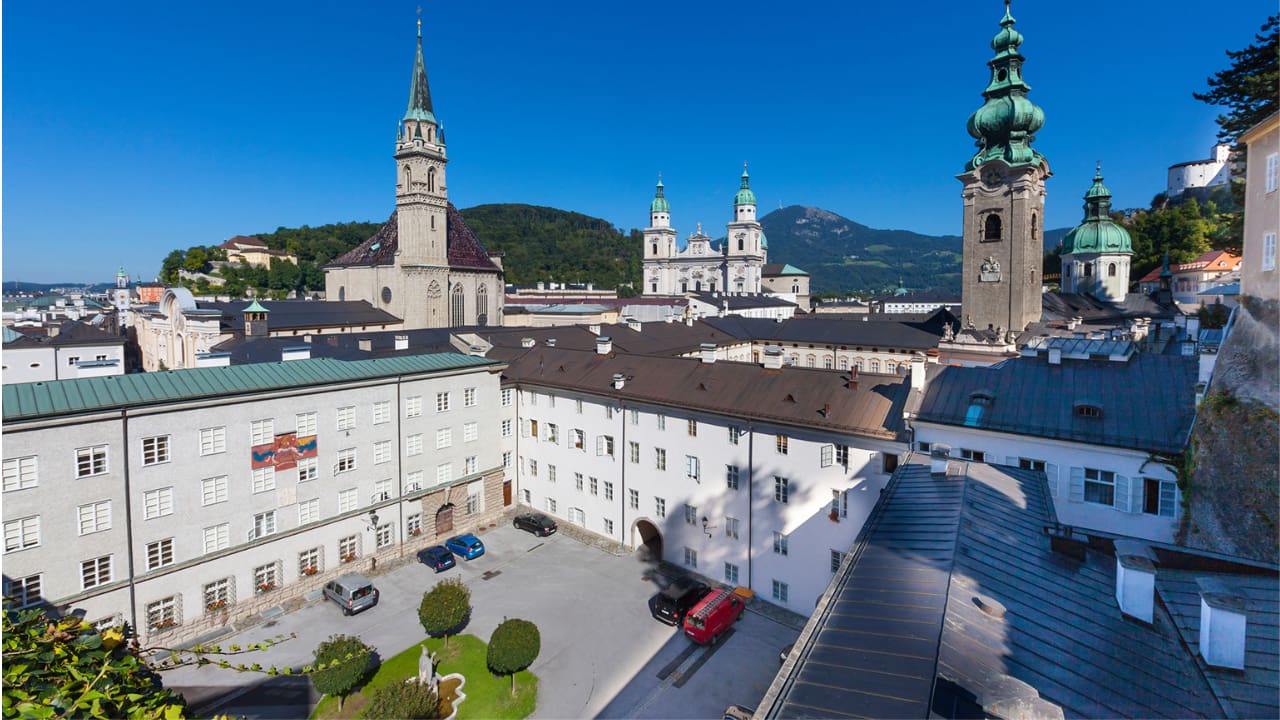
The Residenzplatz
This might be the best place to start your exploration of Salzburg, as it is one of the city’s main squares. The fountain in the centre of Residenzplatz was the work of an Italian sculptor in 1661 – and we think it is one of the most beautiful in Austria. The Residenzplatz was laid out from 1587 at the request of Prince Archbishop Wolf Dietrich Raitenau, after he ordered the cemetery of the old monastery north of Salzburg Cathedral to be abandoned. Moreover, it is located on the square (see below), kust like the Alte Residenz museum to the west and the Neue Residenz (New Residence) to the east. This building of Renaissance style, built from 1588 onwards, is unmissable with its prominent bell tower.
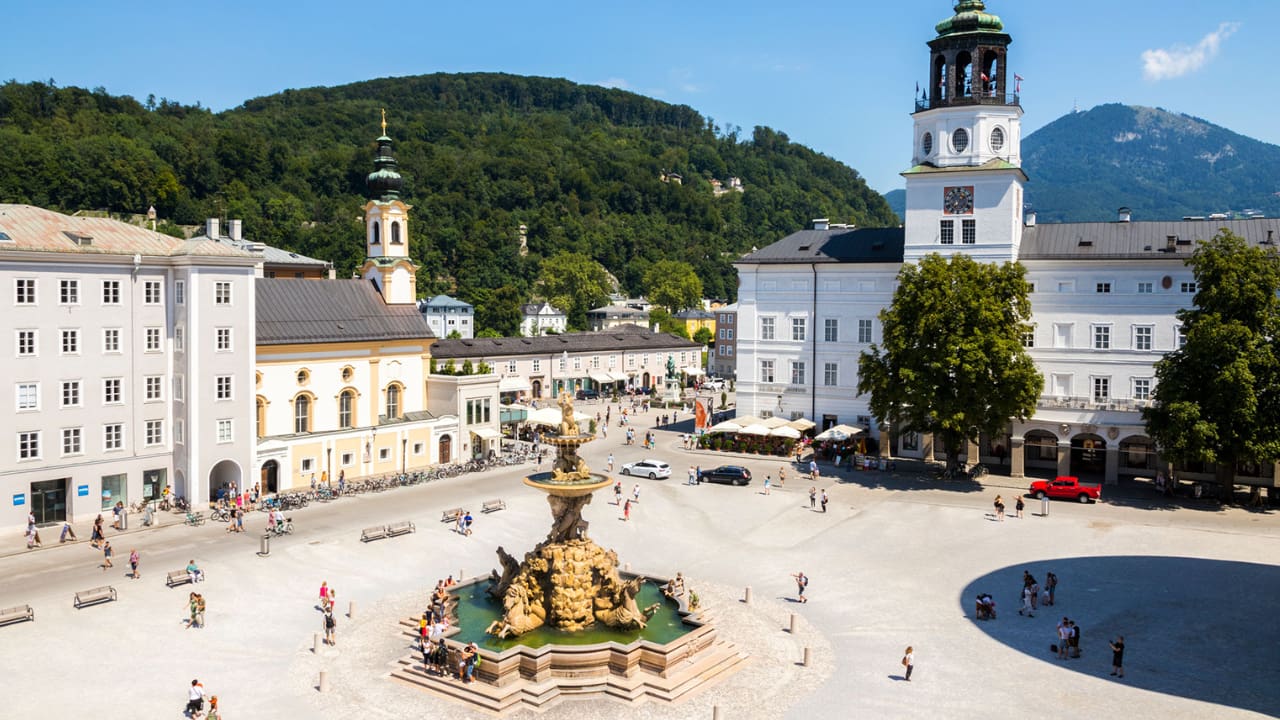
Hellbrunn Castle and Fountains
Hellbrunn Castle (Schloss Hellbrunn) was never intended to be a year-round dwelling – it was built as more of a summer residence. Nonetheless, it is incredibly impressive, and a tour gives you a taste of the lives of the extremely rich and powerful rulers of the 17th century. The building was also built at an impressive speed for the time, begun in 1612 and finished in 1625. Due to its location south of Salzburg, it enjoys a water supply from Mount Helbrunn. You will therefore find water games which have kept their former splendour there. Aomantic atmosphere is guaranteed.
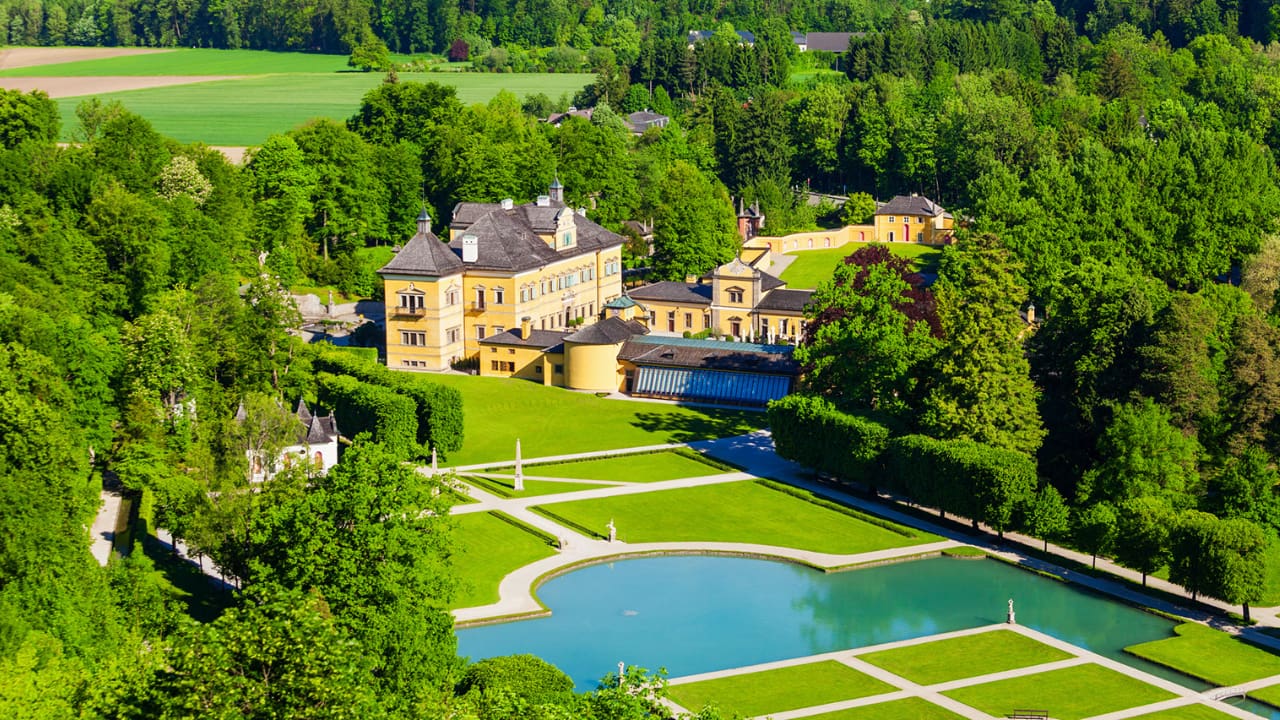
Salzburg Franciscan Church
This is one of the oldest churches in the city. The high roof of the chancel and the Gothic tower on the south side, dating from 1498 are some of the remarkable features of the exterior. Inside, the high altar, built in 1709 and renowned for its sculpted Madonna from the end of the 15th century, stands in front of a ring of Baroque chapels. The Franciscan Convent, still in operation, is located just in front of the church.
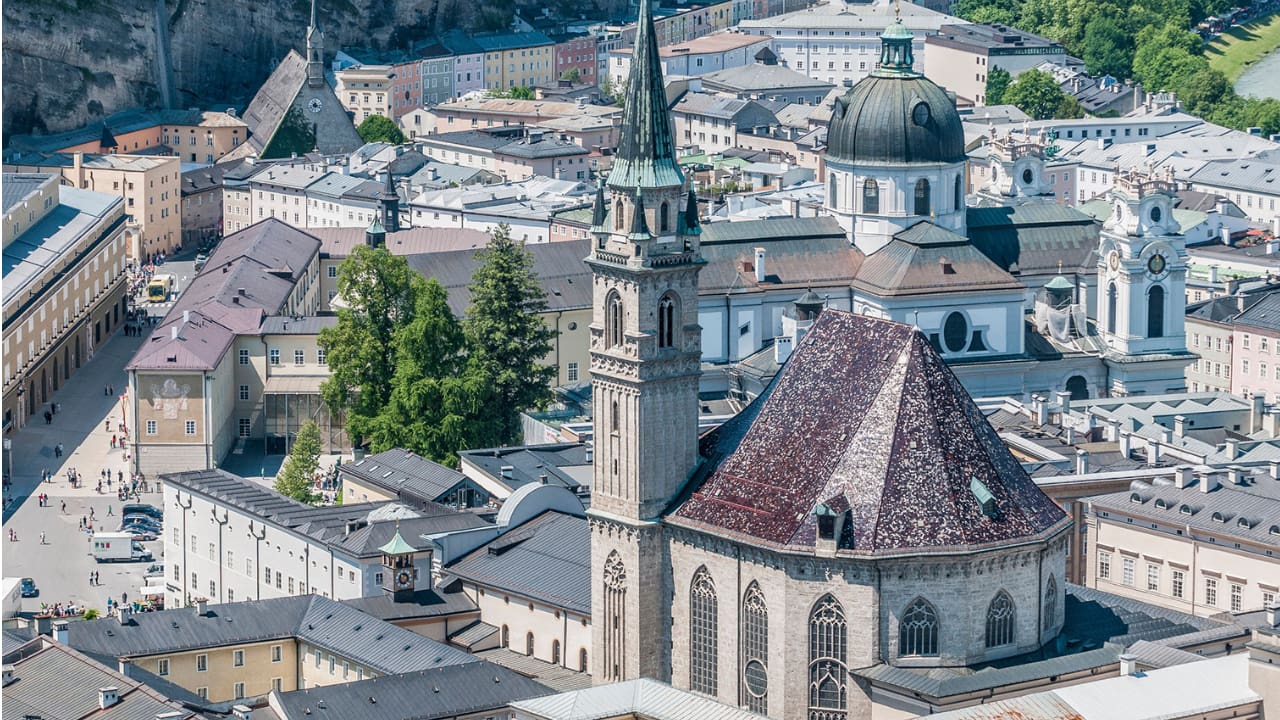
Salzburg festival halls including Mozart’s House
The Festspielhäuser Führungen consist of three buildings: the immense Großes Festspielhaus (the Grand Festival Hall), one of the largest performance halls in the world, the smaller Haus für Mozart (Mozart’s House), connected via an entrance hall decorated with magnificent murals, and the Karl-Böhm Room, used for exhibitions and celebrations. The biggest names in European music and theatre perform in these venues during the famous Salzburg Festival, which lasts for five weeks during the summer. An unmissable experience in the city.
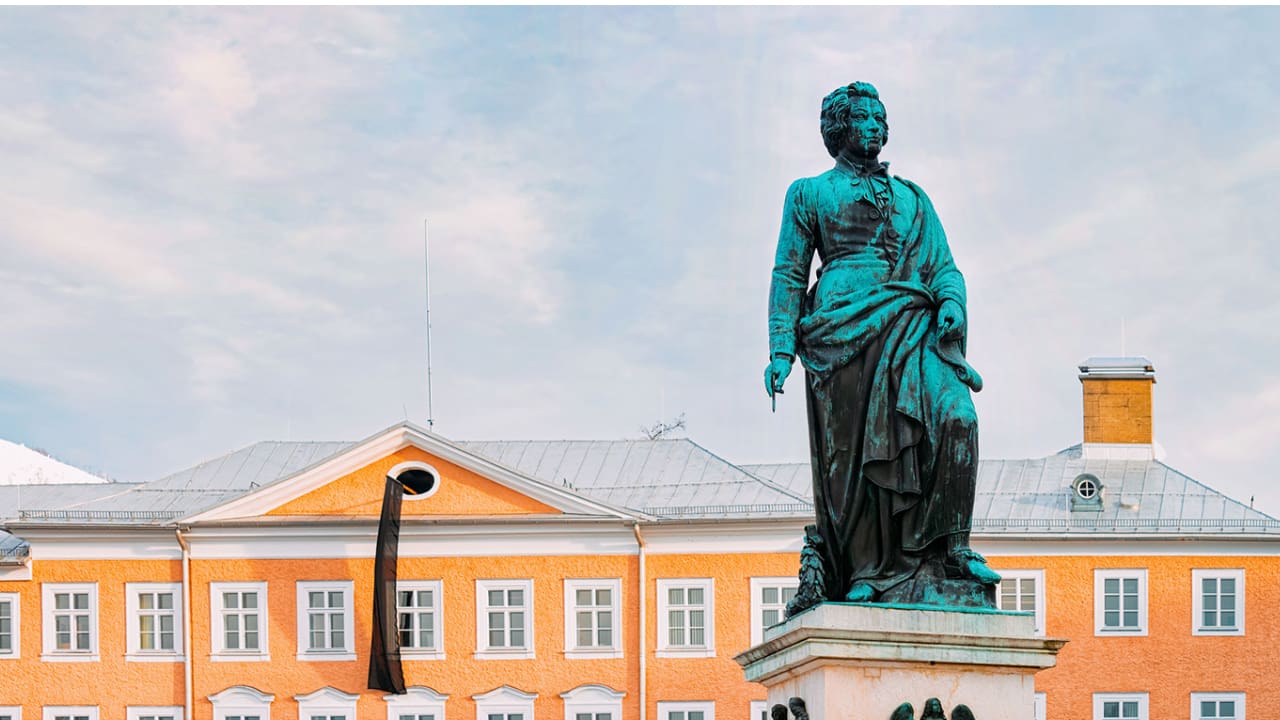
The Old Town or Altstadt
Apart from its architectural gems, Salzburg has many tourist attractions to unveil, especially in its Old Town, the Alstadt. You can admire the historic merchant residences, built between the 15th and 18th centuries, that border this popular pedestrian area. Another must-see is the courtyard pharmacy (Hofapotheke), dating from the 13th century, which is located in the old market. The Saint-Florian Fountain from the 17th century, with its octagonal basin and an even older spiral grid dating from 1583, marks the centre of the square.

The church and the cemetery of San Sebastián
This church was built in 1512 and then completely renovated in the Rococo style in 1753. It is neighboured by the Saint-Sébastien cemetery, where plague victims were buried for a time before it became the resting place of the people of Salzburg society. The graves of Mozart’s father, Leopold, and his widow, Konstanze, are thus on the way to the church.

Salzburg Cathedral
The west facade of this building faces the Domplatz and is adorned with four massive marble sculptures, the outermost representing the patron saints of the province, Saint Rupert and Virgil. The three large bronze doors carry emblems of faith, love and hope and the high altar features a resurrection scene painted in 1628. The magnificent paintings of the vault only add to the beauty of the place. The Cathedral Museum, which houses collections of liturgical objects and works of art from the Archdiocese of Salzburg, will make an ideal last stop to extend the visit. Be sure to check the cathedral’s website in advance for information on upcoming shows and recitals.
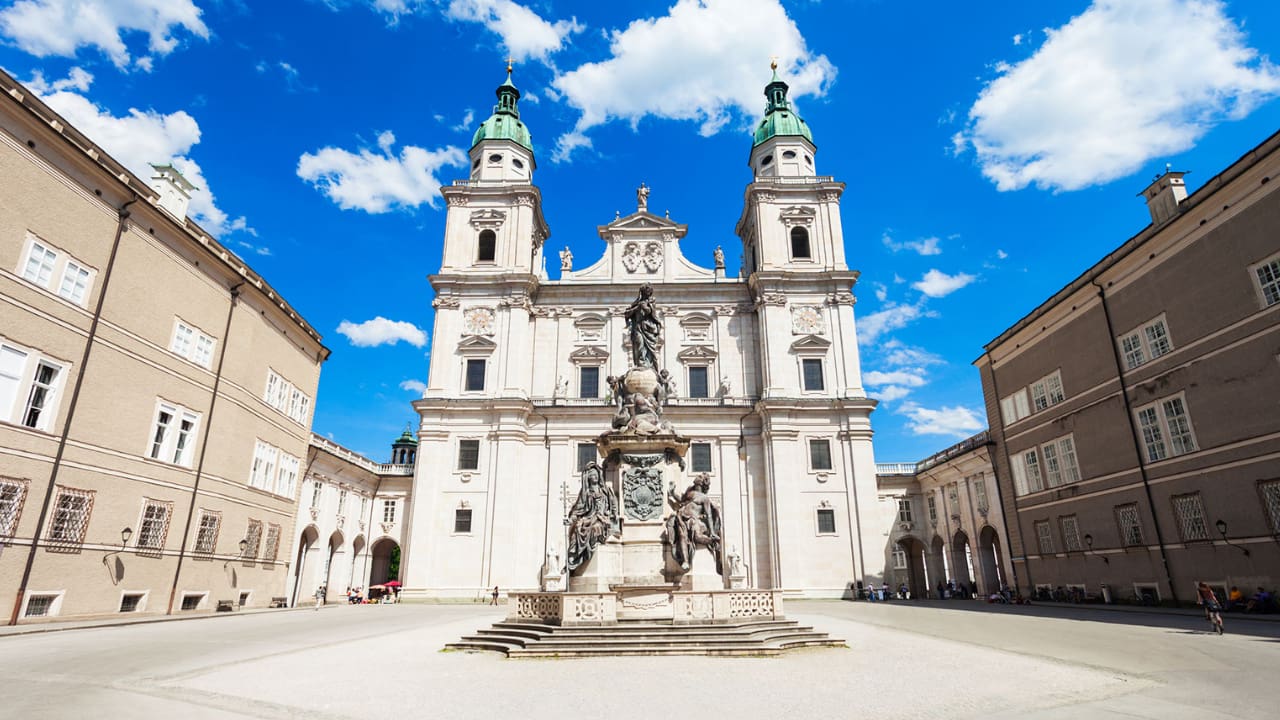
This was our selection of must-see things in Salzburg, but the list is obviously not exhaustive. Share your favourites in the comments!
